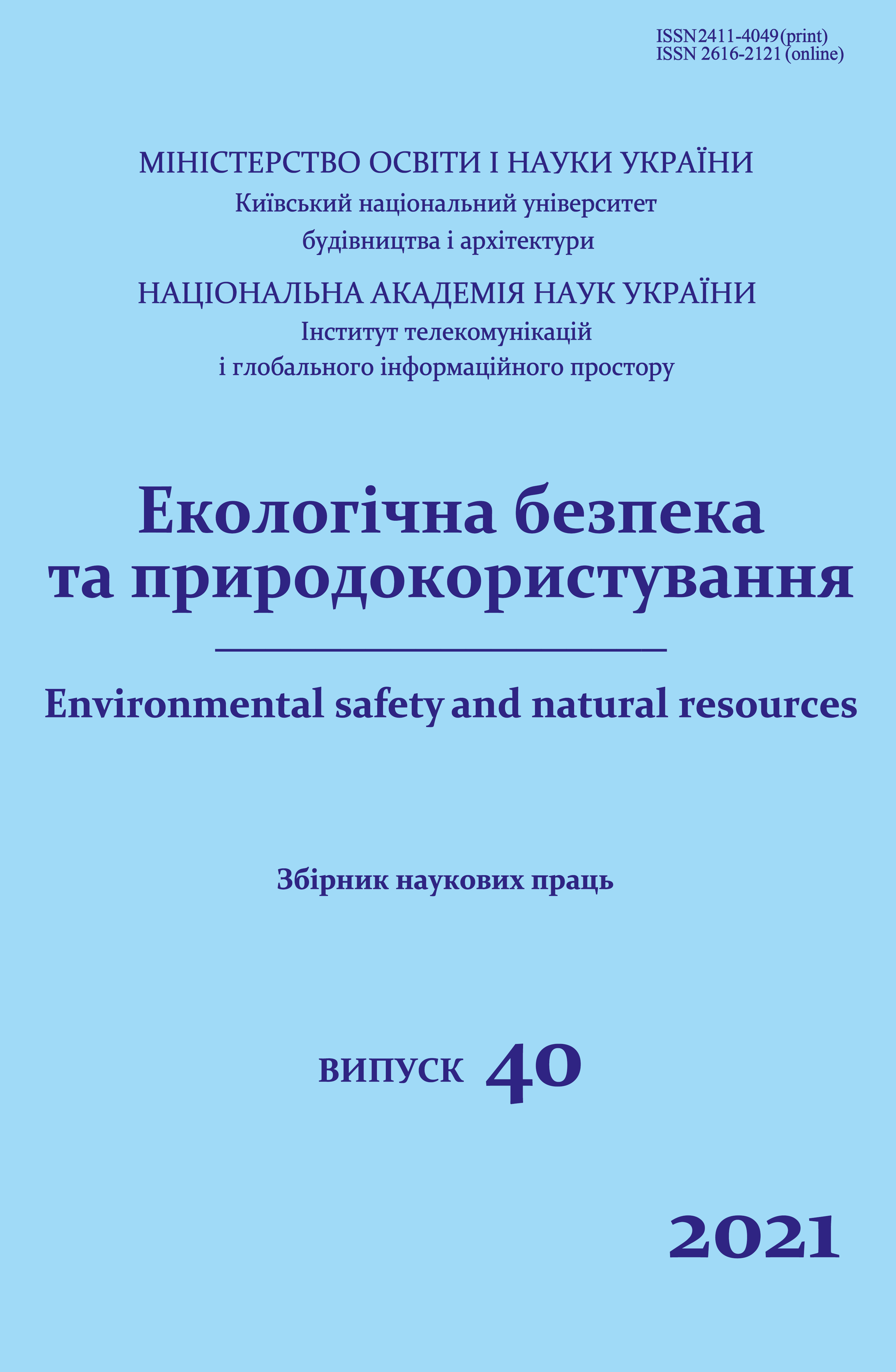Synthesis of information and telecommunication networks of automatized environmental security systems with the purpose of gaining maximum noise resistance with a given efficiency
DOI:
https://doi.org/10.32347/2411-4049.2021.4.5-20Keywords:
system architecture, IT-infrastructure, standardization and unification, telecommunication and IT fieldAbstract
The article defines the system features, properties and characteristics of information and telecommunication networks of automated environmental safety systems: information reliability and proven efficiency as a fundamental characteristic of system perfection. The main task of this research is to standardize the highest level of information and telecommunications networks architecture that provide the creation, processing, storage, deletion and transportation of information. In this case, the architecture is considered as a single for: all types of networks (including network services): optical transport network, Internet network (data network), fixed telephone network, mobile network and all types of products, customers, services, resources, aspects of management. A very important requirement is that the system architecture should not change when changing the structure of products, market requirements or the structure of the company. Standardization of information systems architecture involves: defining a complete list of architecture components; determination of functional boundaries of components; definition of interfaces (protocols) of interaction of components. The main purpose of architecture standardization is: to reduce the implementation of telecommunications services by reducing the time for implementation and modernization of information systems, and increase the efficiency of implementation of information systems, as well as reduce costs for their creation and operation by: avoiding duplication of functions; use of open interfaces; repeated use of the same type of elements. The research concerns the structural synthesis of the architectures of four main telecommunication networks: transport, IP, mobile and fixed. Eight sets of network resources (levels) were selected to standardize each network architecture. Based on the results of the analysis, it is possible to draw a conclusion about the development potential of each network depending on the trends of modern telecommunications services. The telecommunication services means of production architecture, which include platforms of network resources and network services, is considered. The article proposes a methodological basis for the synthesis of information and communication technology systems in order to establish a single information platform, which is presented as a universal architecture of information and communication systems. The messaging service is considered in the context of: one workstation, one domain and interconnection between domains. The efficiency of information transmission systems is considered. When evaluating different communication systems, two indicators were taken into account: efficiency and noise immunity; their combination gives a fairly complete description of the system. The most perfect system is the one that provides the greatest efficiency at a given noise immunity or, conversely, the greatest noise immunity at a given efficiency.
References
Schlaepfer, R. C., & Koc, M. (2015). Deloitte AG, Industry 4.0: Challenges and Solutions for the Digital Transformation and Use of Exponential Technologies, Audit, Tax, Consulting, Corporate Finance.
Willliam, M. D. (2014). Industrie 4.0 – Smart Manufac turing For The Future. Berlin: Germany Trade & Invest.
Kagermann, H., Wahlster, W., & Helbig, J. (2013). Recommendations For Implementing The Strategic Initiative Industrie 4.0: Final Report of the Industrie 4.0 Working Group. Ulrike Findeklee: Acatech – National Academy of Science and Engineering.
Kamarul Bahrin, M. A., Othman, M. F., Nor Azli, N. H., & Talib, M. F. (2016). "Industry 4.0: A Review on Industrial Automation and Robotic". Jurnal Teknologi, 78(6-13). doi: https://doi.org/10.11113/jt.v78.9285
Adolph, Lars & et al. (2016). German Standardization Roadmap: Industry 4.0. Version 2. Berlin: DIN e.V.
Jew, J. (2010). BICSI Data Center Standard: A Resource for Today’s Data Center Operators and Designers. BICSI News Magazine, May/June 2010, 28.
Niles, S. (2011). Standardization and Modularity in Data Center Physical Infrastructure. Schneider Electric.
Kopiika, O.V. (2013). Network services and network device services in Data Centers. Control, navigation and communication systems, 4 (28), 98-104 (in Russian).
Telecommunications Infrastructure Standard for Data Centers (2005). TIA STANDARD TIA-942. Telecommunications Industry Association.
Kopiika, O.V. (2014). Network architecture in modern data centers. Scientific notes of the Ukrainian Research Institute of Communications, 2(30), 34-41 (in Ukrainian).
Data Center Design and Implementation Best Practices. (2011). ANSI/BICSI 002-2011. Committee Approval.
Tanenbaum, E., & van Steen, M. (2003). Distributed Systems: Principles and Paradigms. SPb.: Piter (in Russian).
Kolesov, Yu. B., & Senichekov, Yu. B. (2006). Modeling Systems: An Object Oriented Approach. BHV-Petersburg (in Russian).
Dovgiy, S. O., & Kopiika, O. V. (2001). Automated system for the process of taking decisions during the liquidation of the inheritance of an accident at the CNPP. In Informatization of aerospace land exploration (pp. 211-266). Kyiv: Naukova dumka (in Ukrainian).
Serhiienko, I. V., Stetsiuk, P. I., & Koshlai, L. B. (2009). Models and information technologies for decision support during structural and technological transformations. Cybernetics and Systems Analysis, 2, 26-49 (in Russian).
Groover, M. (2014). Fundamentals of Modern Manufacturing: Materials, Processes, and Systems.
Choi, M.-J., Ju, H.-T., Hong, J. W.-K., & Yun, D.-S. (2008). Design and Implementation of Web Services-based NGOSS Technology Specific Architecture. Annals of Telecom-munications. Special Issue on “Next Generation Network and Service Management”, 63(3-4), 195-206.
BPM CBOK Version 3.0. Guide to the Business Process Management Common Body Of Knowledge. (2016). Мoscow: Alpina Pablysher.
Dovgiy, S. O., Kopiika, O. V., & Polenok, S. P. (2001). New technologies in telecommunications: the choice of technological architecture. Modern development trends. Кyiv: Ukrtelecom (in Russian)
Balashov, V. A., Kopiika, O. V., & Lyakhovetsky, L. M. (2005). VDSL – near future of digital subscriber access. Communication, 4, 10-16 (in Russian).
Downloads
Published
How to Cite
Issue
Section
License
Copyright (c) 2021 Stanislav O. Dovgiy, Oleh V. Kopiika, Oleksii S. Kozlov

This work is licensed under a Creative Commons Attribution 4.0 International License.
The journal «Environmental safety and natural resources» works under Creative Commons Attribution 4.0 International (CC BY 4.0).
The licensing policy is compatible with the overwhelming majority of open access and archiving policies.

